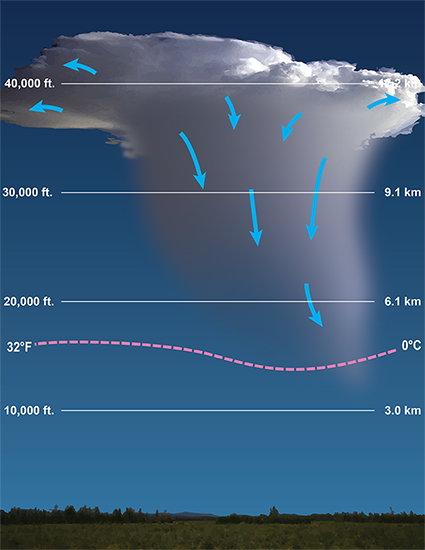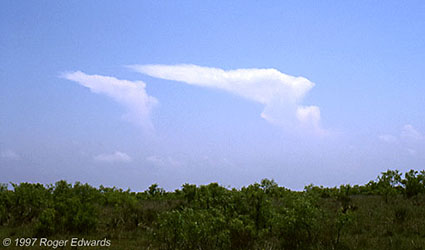The building block of all thunderstorms is the thunderstorm cell. The life time a single thunderstorm cell ranges from 30 to 60 minutes. Thunderstorm cells have three distinct stages:
The developing stage of a thunderstorm is marked by a cumulus cloud that is being pushed upward by a rising column of air (updraft).
The cumulus cloud soon looks like a tower (called towering cumulus) as the updraft continues to develop. There is little to no rain during this stage.
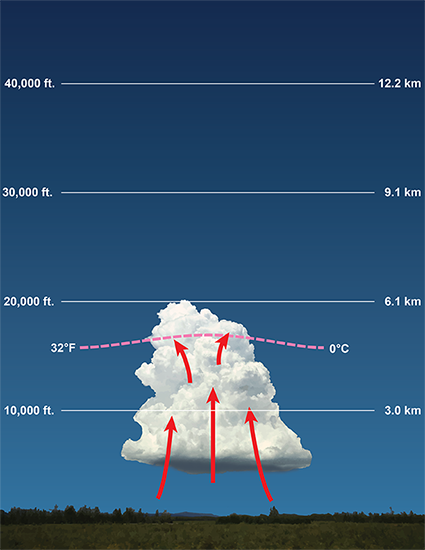

The thunderstorm enters the mature stage when the updraft continues to feed the storm, but precipitation begins to fall out of the storm, creating a downdraft (a column of air pushing downward).
When the downdraft (strong updrafts and downdrafts coexist) and rain-cooled air spreads out along the ground it forms a gust front, or a line of gusty winds.
The storm has considerable depth, often reaching 40,000 to 60,000 feet (12 to 18 km). The mature stage is the is the most dangerous stage and the most likely time for hail, heavy rain, frequent lightning, strong winds, and tornadoes.
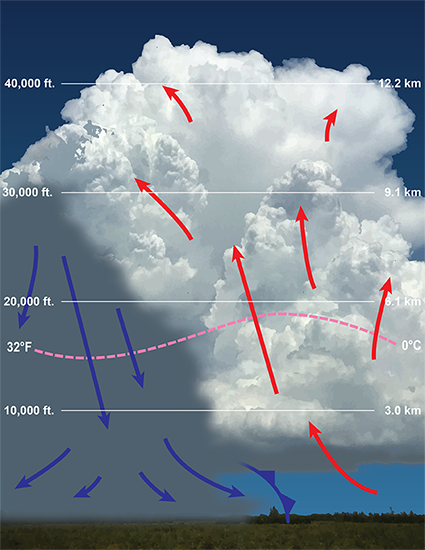
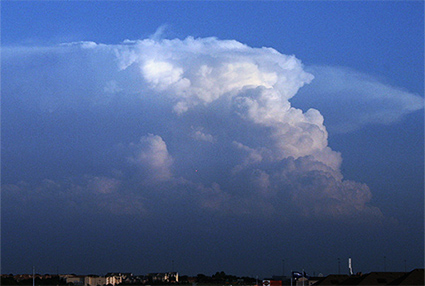
Eventually, a large amount of precipitation is produced and the updraft is overcome by the downdraft beginning the dissipating stage.
At the ground, the gust front moves out a long distance from the storm and cuts off the warm moist air that was feeding the thunderstorm.
Light rain and weak outflow winds may remain for a while during this stage, before leaving behind just a remnant anvil top.
